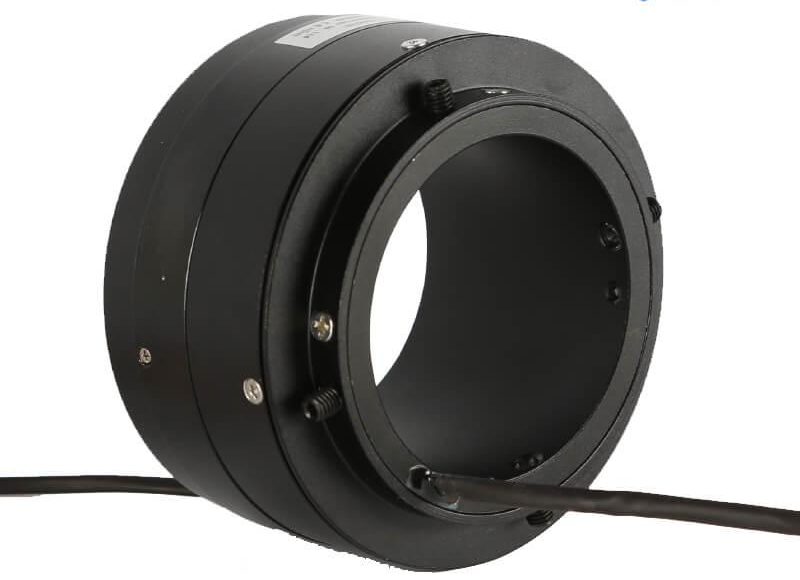In a significant breakthrough for high-tech industries, engineers have unveiled an ingenious solution that promises to transform the way electrical connections are established. The introduction of the electrical through-hole slip ring has sparked excitement among researchers and industry experts alike. This cutting-edge technology is poised to revolutionize connectivity, opening up new possibilities in sectors ranging from robotics and aerospace to medical devices and renewable energy. Let’s delve into the details of this remarkable innovation and explore the potential impact it could have on various industries.
- A Breakthrough in Connectivity
- Enhanced Reliability and Performance
- Applications Across Industries
- Future Possibilities
A Breakthrough in Connectivity
The electrical through-hole slip ring is a novel component that enables the transfer of electrical signals and power between a stationary structure and a rotating one. Unlike traditional slip rings, which utilize wires passing through the center, this breakthrough design incorporates an innovative through-hole channel that allows for the transmission of electrical signals across rotating interfaces. This new approach eliminates the need for cumbersome and unreliable wires, providing a seamless and efficient connection.
Enhanced Reliability and Performance
One of the key advantages of the electrical through-hole slip ring lies in its enhanced reliability and performance. By eliminating the need for wires to pass through the center, the risk of wire breakage or tangling is significantly reduced. This breakthrough not only enhances the overall durability and lifespan of the slip ring but also ensures uninterrupted signal transmission, critical for mission-critical applications.
Furthermore, this innovative technology enables the transfer of multiple signals and power channels simultaneously, offering a significant boost to overall system efficiency. With its ability to handle high-frequency signals and transmit both analog and digital signals concurrently, the electrical through-hole slip ring paves the way for improved data transfer and communication in complex systems.
Applications Across Industries
The advent of the electrical through-hole slip ring holds immense promise for a wide range of industries. In the realm of robotics, this innovation enables seamless rotation in robotic joints, allowing for greater freedom of movement and increased dexterity. Industries such as manufacturing, automation, and logistics are set to benefit from this technology, as it enhances the reliability and performance of robotic systems in demanding environments.
The aerospace industry is another sector poised for a transformational impact. With rotating components in aircraft engines and satellite communication systems, the electrical through-hole slip ring can facilitate reliable electrical connections, even in extreme conditions. This advancement could lead to improved performance, reduced maintenance costs, and enhanced safety in the aviation and space exploration domains.
In the medical field, the slip ring’s potential is evident in applications such as computerized tomography (CT) scanners, robotic surgery systems, and medical imaging devices. The electrical through-hole slip ring’s ability to transmit power and signals without hindrance ensures smooth and uninterrupted operation, allowing for more precise and efficient medical procedures.
The renewable energy sector is also set to gain from this groundbreaking innovation. Wind turbines and solar trackers require continuous rotation for optimal performance. The electrical through-hole slip ring eliminates the need for rotating wires, enabling efficient power transmission and control signals in renewable energy systems. This advancement has the potential to increase the reliability and lifespan of renewable energy infrastructure, contributing to the growth of clean and sustainable power generation.
Future Possibilities
While the electrical through-hole slip ring has already garnered significant attention and acclaim, researchers and engineers continue to explore its potential applications and refine its capabilities. The integration of advanced materials, such as nanocomposites, and the incorporation of smart technologies like wireless power transfer hold the promise of even more versatile and efficient slip rings.
Furthermore, ongoing research aims to enhance the slip ring’s ability to withstand extreme temperatures, pressures, and corrosive environments. This will unlock new possibilities for technology in sectors like oil and gas exploration, deep-sea operations, and space missions.
The introduction of the electrical through-hole slip ring marks a significant milestone in the field of connectivity solutions. With its seamless transmission of electrical signals and power across rotating interfaces, this groundbreaking innovation is set to redefine the standards of reliability, performance, and efficiency in high-tech industries. From robotics and aerospace to medical devices and renewable energy, the applications of this technology are vast and far-reaching. As researchers and engineers continue to push the boundaries of this technology, we can expect to witness even more exciting developments in the years to come, ushering in a new era of connectivity and innovation.


